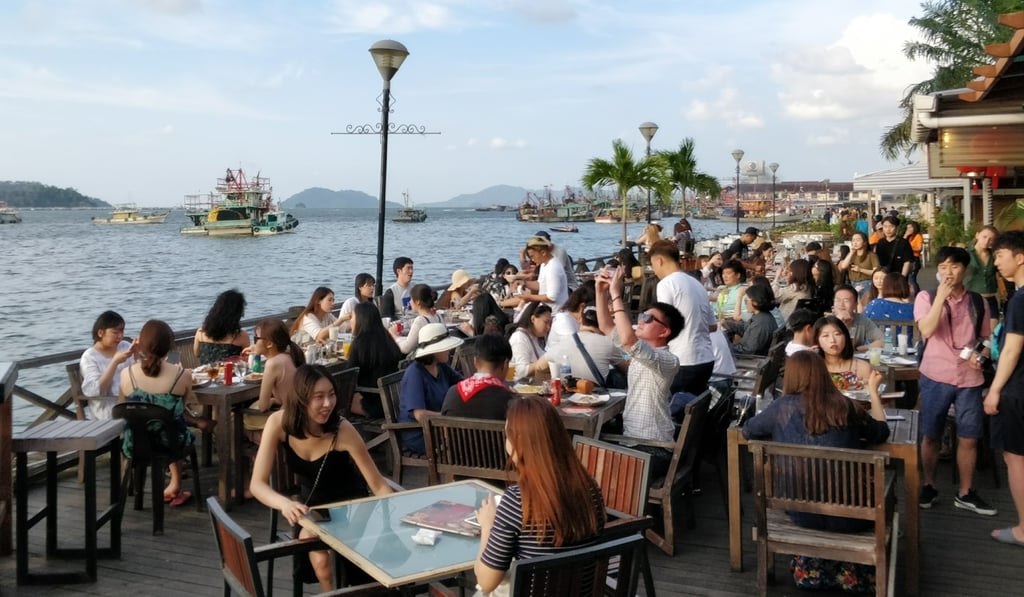Malaysia lures Chinese tourists to Sabah state with sun, sand and selfies
Once overlooked as a destination for travellers, Sabah now ranks as a top 10 destination for the more than 6 million people who went abroad this festive season

It’s just after dinner on February 9, exactly a week before Lunar New Year. Lu Xie, a native of Ningbo, China, is nowhere near preparing for Chunyun, the annual Spring Festival travel rush.
Instead, she is holidaying 2,700km away from her hometown, off the coast of North Borneo in the east Malaysian port city of Kota Kinabalu.
In the midst of snapping dozens of sunset selfies at Jesselton ferry terminal to send home via WeChat, 26-year-old Lu tells This Week in Asia she wanted to “try something new” by travelling with her two friends instead of heading home ahead of the festive season.
How Malaysia’s golden goose of ecotourism, Sabah, keeps the visitors coming
The trio say they flew in from Shanghai – where they work – and were travelling independently, without the help of tour groups.
Sabah, the state where Kota Kinabalu is located, was an easy pick, Liu and her friends say, because it was just a five-hour flight away.

The three friends – dressed to the nines in long floral dresses – decline to have their photograph taken, but hearing of their anecdote alone puts a big grin on the face of Sabah tourism minister Masidi Manjun.
The east Malaysian state this month was named by the Chinese travel booking site Ctrip as one of the top 10 destinations for the estimated 6.5 million Chinese travellers who ventured abroad this festive season.